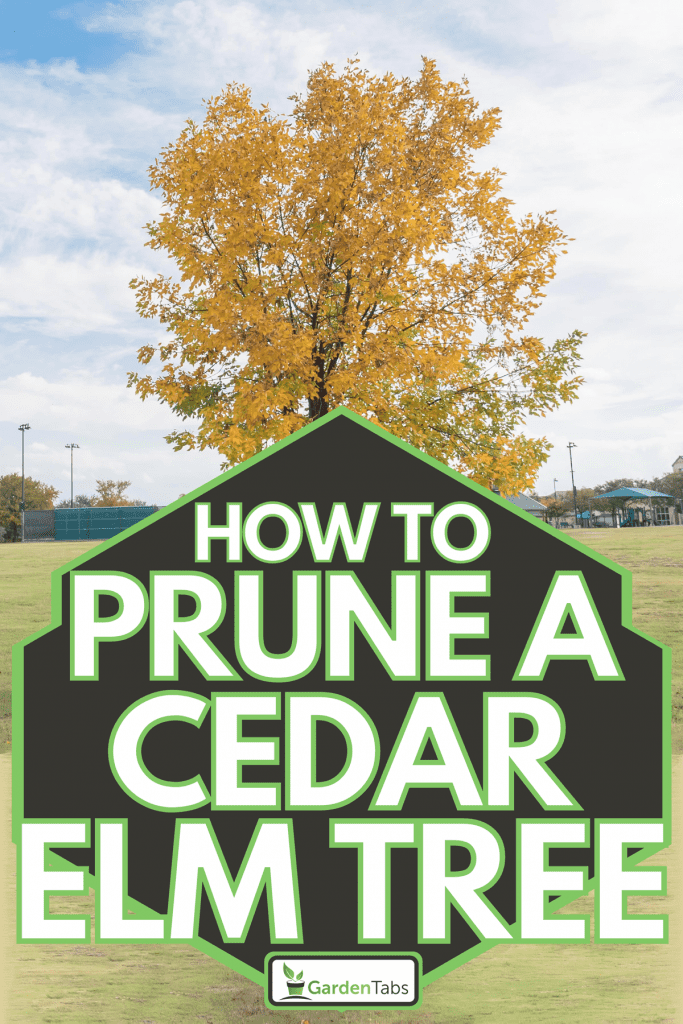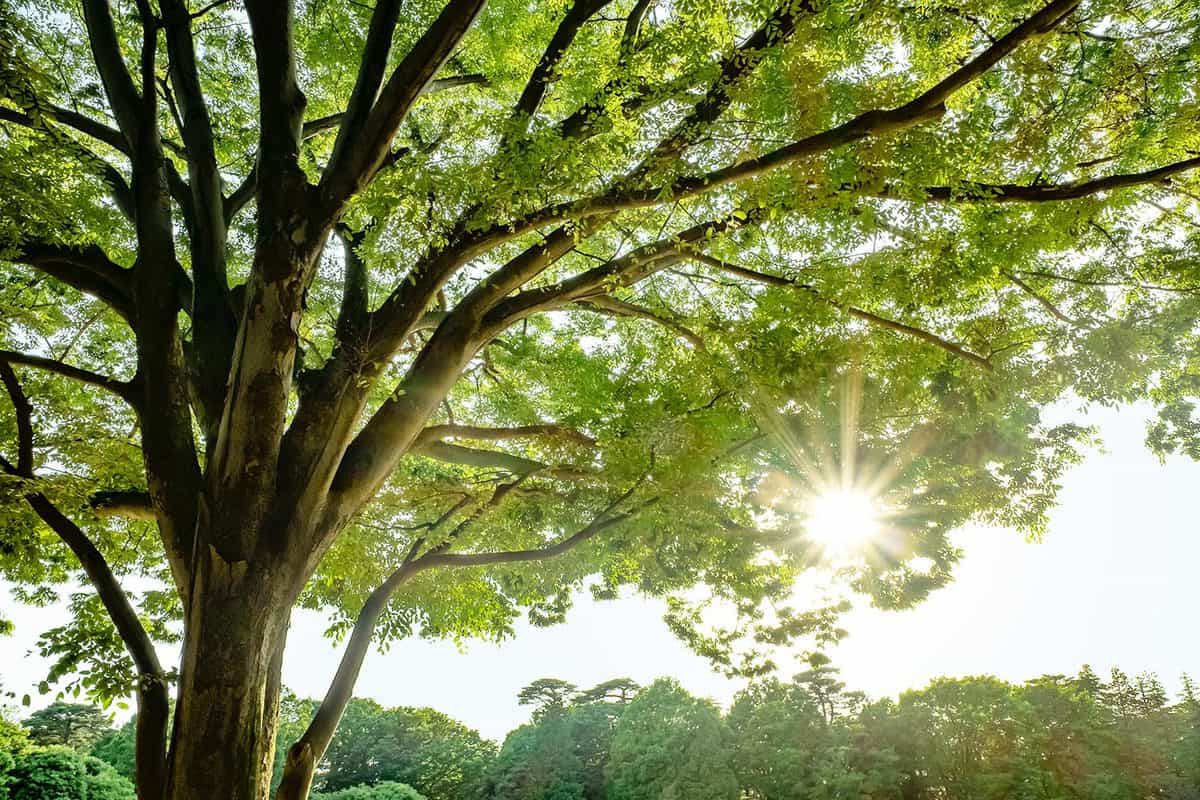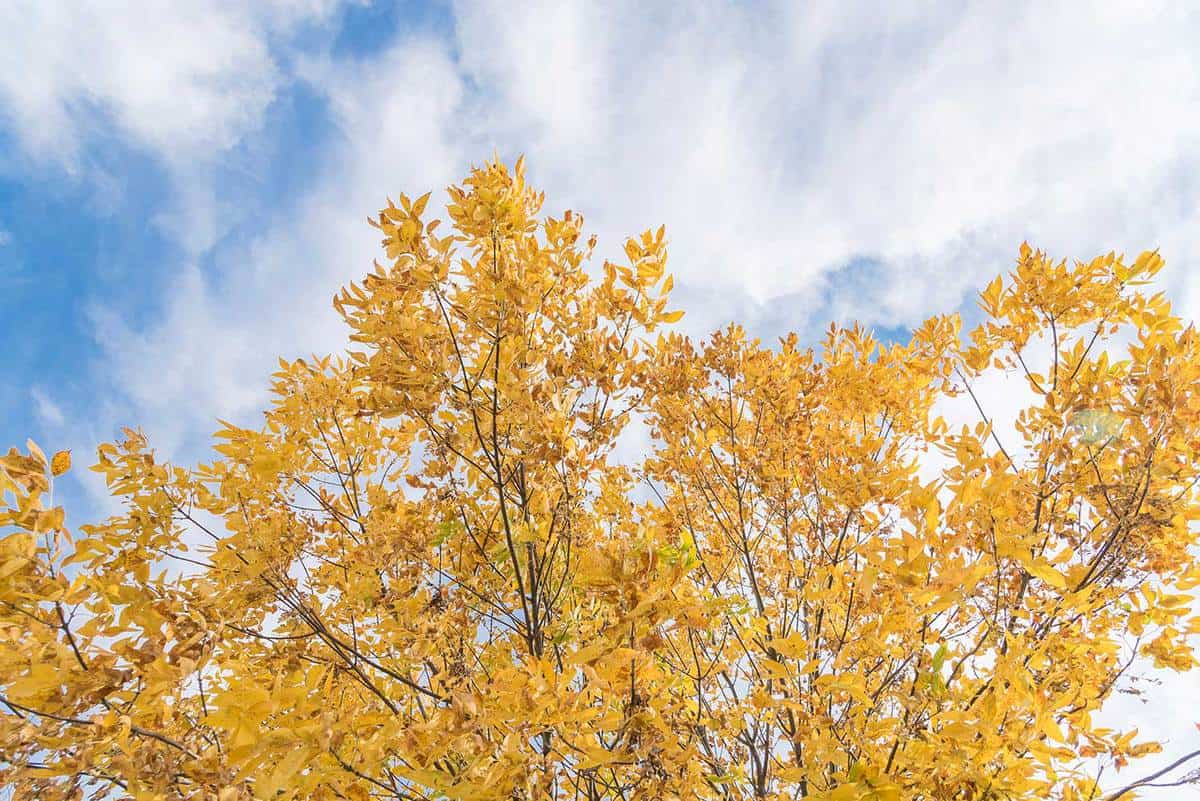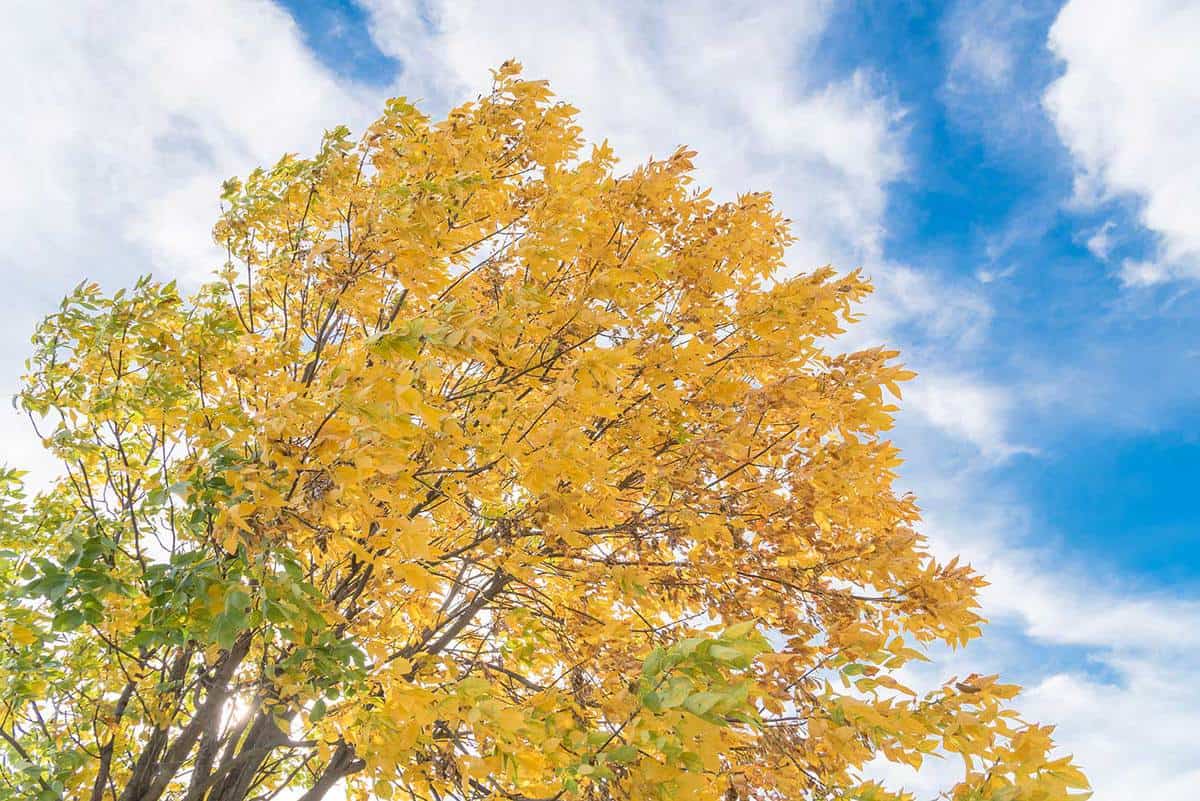Pruning your Cedar Elm tree doesn't have to be a long and complicated project. And it's important to prune your tree to help it maintain a solid branch structure and to keep it revitalized for growing foliage. We have researched one of the best methods to prune a Cedar Elm, and in this post, we will go over it.
Here are the steps to prune your Cedar Elm tree:
- Prepare your pruning equipment
- Examine the tree for pests and fungus
- Cut the lower branches
- Remove thicker branches
- Touch up the top of the tree
Many people prune the elm trees to simply shape them. But regardless of your reason for planting a tree, it's critical to know the best way to do it and when to do it. Continue reading to learn more about the growth of Cedar Elm trees and the steps to take when pruning them.

Steps to Prune a Cedar Elm Tree
Pruning your elm tree can help it maintain the shape that you want and get rid of any dead branches and leaves that may be draining its energy supply. You can also prune your elm while it's young to help it build a solid canopy and reduce the growth of multiple trunks.
Things you'll need:
- Pruning shears
- Plastic garbage bags
- Ladder
- Rubbing alcohol
- Neem oil or another pest repellant

1. Prepare your pruning equipment
It's best to gather and prepare all of your pruning equipment beforehand. You'll want to ensure that your pruning shears have been cleaned and disinfected with rubbing alcohol or another disinfectant.
You can also use a mixture of bleach and water in a 1:8 ratio. Combine the solution in a spray bottle and spray your pruning shears with it. If you plan to use any hand saw or loppers, be sure to spray the blades of these tools as well. This will prevent you from spreading any tree diseases to or from the elm.
2. Examine the tree for pests and fungus
Take a close look at the tree from top to bottom. Note any areas of discoloration, abnormal growths, or thinning leaves and branches. Also, look for any small brown, red, black, or white dot on the leaves. These are often signs of a pest infestation.
If you determine that the tree has a fungus or pest infestation, apply a natural fungicide or pesticide to the tree before pruning it.
Click here to find neem oil on Amazon.
3. Cut the Lower Branches
Start by pruning the branches closest to the trunk. When deciding which branches to remove, note any areas that are discolored, dying, or that are simply too long. Branches growing at angles or very thinly should be cut down.
Don't cut the branches any more than 2 inches from the base of the trunk. Also, remove any branches from the tree's collar, as they can cause delayed healing and thin regrowth.
4. Remove Thicker Branches
Next, grab your saw and remove any dying or dead branches that were too thick to remove with your pruning shears. It's always best to go from the bottom to the top of the tree.
This will not only allow you to see every area better, but it will help you easily shape the tree. If you're looking to give your elm tree the typical triangle canopy, take off a few extra inches as you go up the canopy.
Also, instead of cutting a thick branch with its thinner branch attachments, be sure to cut the smaller thinner attachments first and then cut the thicker main branch.
Furthermore, cut the main branch into small pieces first, instead of in one cut. This will help you avoid damaging hitting the other lower branches as the heavy branches fall off the tree.
Also, don't try to reach over to feed to the side while on the ladder. Always get off the ladder and move it to the side to avoid tipping it over and causing injury to yourself.
Next, prune any branches rubbing against one another or that seem to be damaging the park. These branches can easily slow the tree's growth and use up its energy supply.
5. Touch Up the Top of the Tree
Pay special attention to the top of the tree during the pruning session, as this will ultimately alter the shape of the tree. Start by cutting off the longest branches.
However, make sure to cut them shorter than the branches beneath them. And as you move up each row of branches, make their length shorter. This process is known as “Topping” the tree.
This step is extremely important as it allows you to increase the oxygen flow and light that the tree receives--especially in the middle and bottom areas of the tree. Overall, you'll want to remove no more than one-third of the tree's canopy during the pruning session.
When Should you Prune a Cedar Elm Tree?

It's best to prune your elm tree regularly to help it establish major branches and a dominant central trunk. However, pruning frequency is also a matter of personal preference and depends on the condition of a tree.
The ideal time of the year to prune your tree is in early spring. This helps to prevent elm bark beetles from making their home in the tree before the summer. Here are a few signs that the tree needs to be pruned.
There are Lots of Broken Limbs
The biggest sign that your elm tree needs to be pruned is when there are a lot of broken branches. If you see a lot of bowing, splintering, or thinly growing branches, try to trim the tree at your earliest convenience. These branches can become hazardous as they weaken, and they'll also deplete energy from the tree that can be used for healthier branches.
Limbs are Becoming too Long
Another sign that it's time to prune your tree is if the limbs become too long for the tree's location. For example, if your tree has branches that are hovering over power lines or close to windows, it may be time to trim them down as a safety precaution.
Before pruning the tree, be sure to take into account the area in which the branches will fall. You don't want them to fall on the power lines, nearby roofs, or in windows. It's also helpful to cut thick branches and small sections first.
It has Dead Limbs or Diseased Areas
If your tree is suffering from a health condition such as a fungus or pest infestation, pay attention to diseased branches and foliage. Try to trim these areas down as far as possible without removing over one-third of the tree at a time.
Diseased limbs can easily spread to other areas of the tree, causing it to fall into a state of ill-health fairly quickly. Be sure to first supply any type of fungicide or pesticide to the tree before pruning it.
The Canopy is too Dense
This sign may not be one that you pick up on right away. It's easy to believe that the tree is growing strong and healthy when you can't see directly through the branches.
However, this is often a sign that the tree is too dense, which can be very hazardous during rainstorms, heavy winds, or freezing temperatures. If you can't see through the tree's canopy at all, it's typically time to trim the branches down a bit.
How do you shape a cedar elm tree?
When shaping the Cedar Elm tree, it's best to start at the bottom of the tree and work your way up. Start trimming the thin, misshapen, or diagonal branches off of the tree--this is known as “maintenance pruning.”
As you work your way up the tree, trim the branches a bit shorter than the previous row. It's also helpful to step off of the letter to visually inspect the tree to make sure that the canopy is developing into the shape that you want.
What is the Life Expectancy of a Cedar Elm Tree?
Cedar Elm trees are known to live approximately 80 to 100 years. Although there a several factors such as moisture and location that will influence the total life expectancy.
How Quickly do Cedar Elm Trees Grow?

On average, the Cedar Elm grows at a rate of about 13 to 22 inches every year.
Wrapping Things Up
We hope this post has helped explain how to prune Cedar Elm trees. Overall, you'll find that these trees are fairly easy to maintain. It's helpful to prune your tree at least once a year to help remove any dead or diseased branches and maintain its canopy shape.
Before you go, be sure to check out our other posts:
How Fast Do Elms Grow And How Long Do They Live? [By Type Of Elm]


